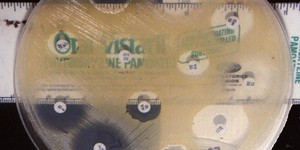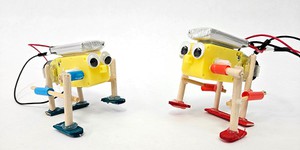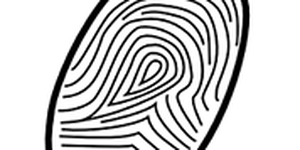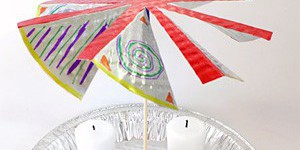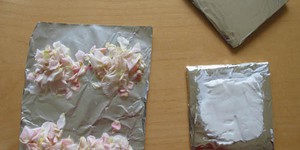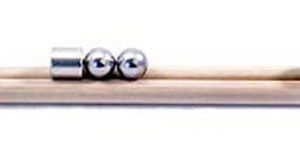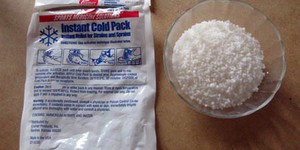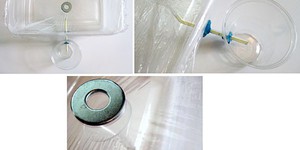Seventh Grade Science Projects (701 results)
Science Buddies' seventh grade science projects are the perfect way for seventh grade students to have fun exploring science, technology, engineering, and math (STEM). Our seventh grade projects are written and tested by scientists and are specifically created for use by students in the seventh grade. Students can choose to follow the science experiment as written or put their own spin on the project.
For a personalized list of science projects, seventh graders can use the Science Buddies Topic Selection Wizard. The wizard asks students to respond to a series of simple statements and then uses their answers to recommend age-appropriate projects that fit their interests.
|
Select a resource
Sort by
|
Artificial intelligence (AI) programs can now generate photorealistic pictures of people who do not exist in the real world. How can you tell if a picture is of a real person or a fake, AI-generated person? What features of the picture do people use to decide whether the face is real or AI-generated? In this project, you will explore these questions as you ask volunteers to look at both real and AI-generated pictures of human faces.
Read more
Featured
Have you heard that garlic powder is supposed to inhibit the growth of bacteria? Which do you think would make a better disinfectant: a solution of garlic powder or a solution of bleach? This project shows you a straightforward way to compare the effectiveness of different disinfectants (or other antimicrobial agents), by measuring zones of inhibition on a culture plate.
Read more
Humans are pretty good at building vehicles with wheels, but building machines with legs that walk like us is a lot harder! In this engineering project you will build a simple robot that walks using a single motor. How fast can you make your robot go?
Read more
You may be familiar with permanent magnets—the kind that hang on a refrigerator. But did you know that other magnets, called electromagnets, can be turned on and off? When turned on, electromagnets act just like permanent magnets, but if you turn them off, their magnetic properties disappear. Electromagnets are an important part of many electronic devices, like motors, loudspeakers, and hard drives. You can create an electromagnet with a simple coil of wire and a battery. In this project,…
Read more
Have you ever looked at two girls and thought they looked so similar that they must be sisters? What about a father and his son — have you ever seen a boy who looked just like how his father did when he was younger? We can often tell that two people are related because they appear to have several similar physical traits. This is because children receive half of their DNA — their genetic blueprints — from each parent. What about fingerprints — are they an inherited trait?…
Read more
Have you ever ridden on a carousel, or a merry-go-round, at an amusement park? On a carousel, you usually get to take a seat on a wooden horse or other animal that spins around and around as the carousel is turned on and powered by electricity. Another smaller type of carousel that people can have in their homes is a candle carousel, which is powered by heat from candles. In this science project, you will get to make your own candle carousel and investigate how the spinning speed of the…
Read more
Have you ever watched your parents dress up for a big evening? They may even splash on a bit of aftershave cologne or dab on some perfume since it is special occasion. But did you know that using perfume and scents is an ancient activity? Perfumes and the art of making perfume is an art that is thousands of years old. In this chemistry science fair project, you will learn more about one way to make perfume, called enfleurage, and experiment with it to extract your own floral scents.
Read more
What can you do with magnets and ball bearings that makes a lot of noise? Why, build a magnetic linear accelerator, called a Gauss rifle, of course! Now, this magnetic accelerator is not a weapon, but a way for you to learn a lot more about physics concepts, like momentum. In this physics science project, you will investigate how far a ball bearing launched by a Gauss rifle will fly, depending on how many magnetic acceleration stages are in the setup and the ball bearing's initial velocity.…
Read more
Quick, what is your favorite color of M&Ms® candy? Do you want to know what dyes were used to make that color? Check out this science project to find out how you can do some scientific detective work to find out for yourself.
Read more
Instant cold packs are popular with coaches and parents for treating minor bumps and bruises. The instant cold packs are not pre-cooled—you just squeeze the cold pack and its starts to get cold. So how does it work? In this chemistry science fair project, you will investigate the chemical reaction that occurs in instant cold packs.
Read more
How can seawater from the oceans be turned into fresh water that is suitable for people to drink? Through a process called solar desalination! In this science project, you will make a solar desalination apparatus using readily available materials, and a power source that is free. How much water can the device produce, and is it still salty at all? What factors affect how effectively saltwater is turned into fresh water?
Read more
|
Explore Our Science Videos
Gingerbread House STEM Challenge
Slow Motion Craters - STEM Activity
The First Cartoon: Make Your Own Thaumatrope!





